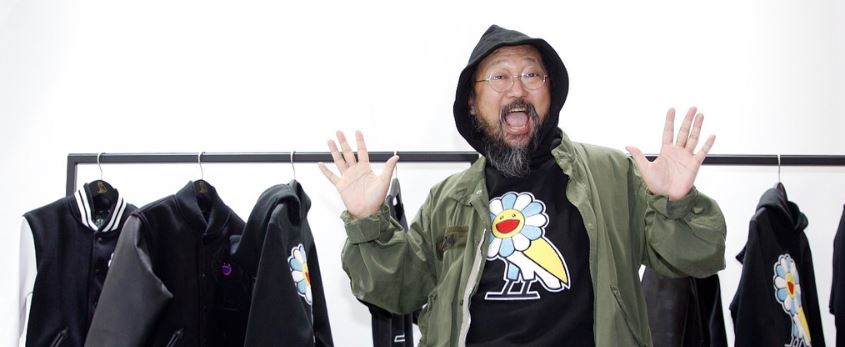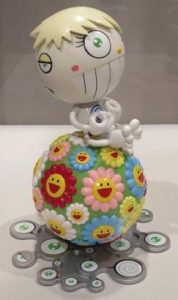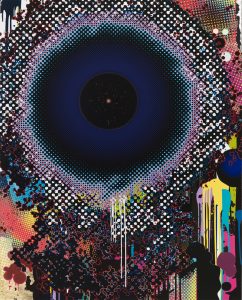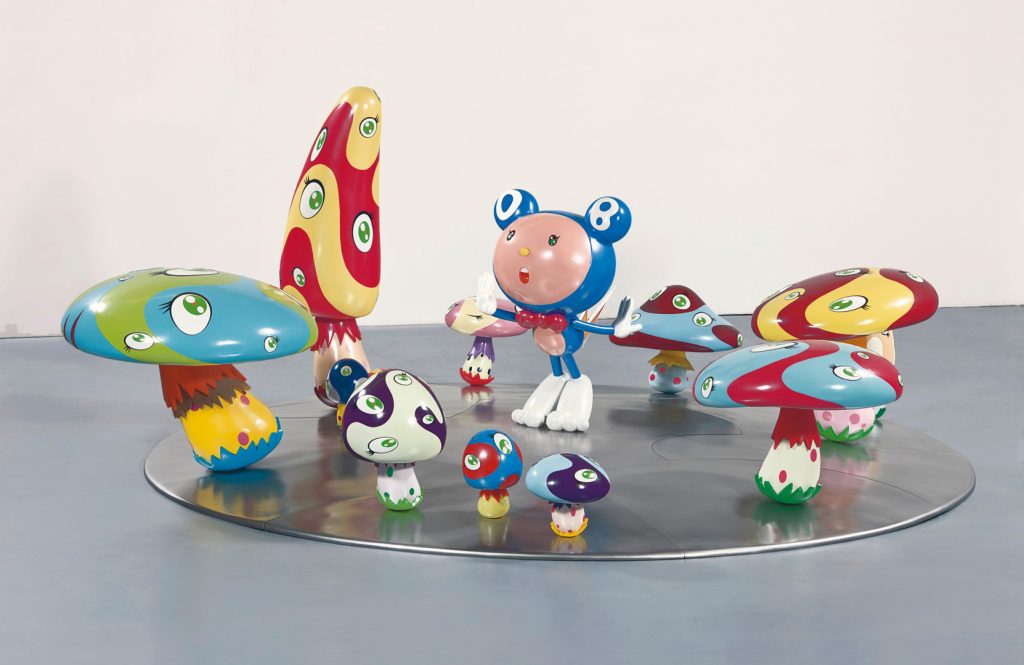Abhishek Kumar
February 01, ON THIS DAY
As a young artist in New York, I thought about postwar Japan – the consumer culture and the loose, deboned feeling prevalent in the character and animation culture. Mixing all those up in order to portray Japanese culture and society was my work.
Takashi Murakami

Takashi Murakami is a Japanese artist who explores Japanese aesthetics and the concept of “Superflat” in his work. He is well-known for his ability to blur the boundaries between art and capitalism. His happy, colourful artwork is influenced by the otaku subculture in Japan, which is a word for people who are obsessed with pop culture. Murakami addresses the present society of Japan and the West’s expanding effect on it through his art. Murakami’s works often feature bright colors, cartoon-like characters, and a mix of traditional Japanese art techniques with contemporary pop art elements. He seeks to bridge the gap between high and low art, and his works often challenge the boundaries of what is considered “art.”

Murakami was born in Tokyo, Japan in 1962 and studied traditional Nihonga painting before developing his own unique style. He runs a production company and art studio called Kaikai Kiki and has directed several music videos and designed album covers. Murakami’s exploration of Japanese aesthetics and the Superflat movement is centered on the idea of flattening the traditional, hierachical structure of Japanese art and culture. He believes that by doing so, it allows for a more open exploration of the world of art and culture. Murakami is known for his colorful, vibrant artwork that uses a variety of mediums, including painting, sculpture, film, and digital media. He also incorporates characters and motifs from traditional Japanese culture, including kawaii (cute) characters, anime, and manga.
The Superflat movement is a postmodern art movement that emerged in the late 1990s. It was founded by artist Takashi Murakami and is characterized by its use of bright, flat colors, cartoon-like imagery, and references to consumer culture. Superflat art often incorporates elements of Japanese popular culture, such as anime and manga, while also incorporating traditional Japanese styles, such as ukiyo-e. The Superflat movement critiques the shallow consumerism of Japanese society and its heavy reliance on material goods as a means of achieving happiness. It also critiques the lack of critical thinking and creativity in Japanese culture, as well as the traditional hierarchical social structure. The Superflat movement is a reaction to Japan’s “flat” culture, and its use of flat, bright colors, cartoon-like images, and references to consumer culture are seen as a way of challenging traditional Japanese aesthetics and values.

Murakami’s exploration of Japanese aesthetics and the Superflat movement is an important contribution to the art world. By breaking down traditional hierarchies and allowing for a more open exploration of the world of art and culture, Murakami has opened up new possibilities for art and culture. His work has inspired a new generation of artists who are exploring and creating art in unique and innovative ways.
Murakami’s art reflects his interest in traditional Japanese art forms such as ukiyo-e woodblock prints, manga comics, and anime animation. He incorporates these influences into his contemporary paintings, sculptures, and merchandise, creating a unique visual language that combines traditional Japanese motifs with modern pop culture references.
Murakami’s work often critiques the mass production and commercialization of Japanese popular culture. The “Superflat” theory suggests that Japanese society has become homogenized and devoid of depth, and this lack of dimensionality is reflected in the country’s popular culture. Through his art, Murakami aims to challenge this cultural flattening and bring a new sense of cultural identity to the forefront.
In addition to his fine art work, Murakami is also known for his collaborations with luxury brands such as Louis Vuitton and Kanye West, further blurring the lines between fine art and commercial products. His impact on the art world has been significant, and he continues to push the boundaries of what is considered “art” and challenge the traditional definitions of high and low culture.
Sources:
- https://www.domestika.org/en/blog/6880-superflat-how-murakami-s-popular-art-movement-emerged
- https://www.theartstory.org/movement/superflat/
- https://www.thenationalnews.com/arts-culture/art-design/2022/12/14/takashi-murakami-the-legendary-japanese-artist-who-broke-all-the-rules/
- https://en.wikipedia.org/wiki/Takashi_Murakami





